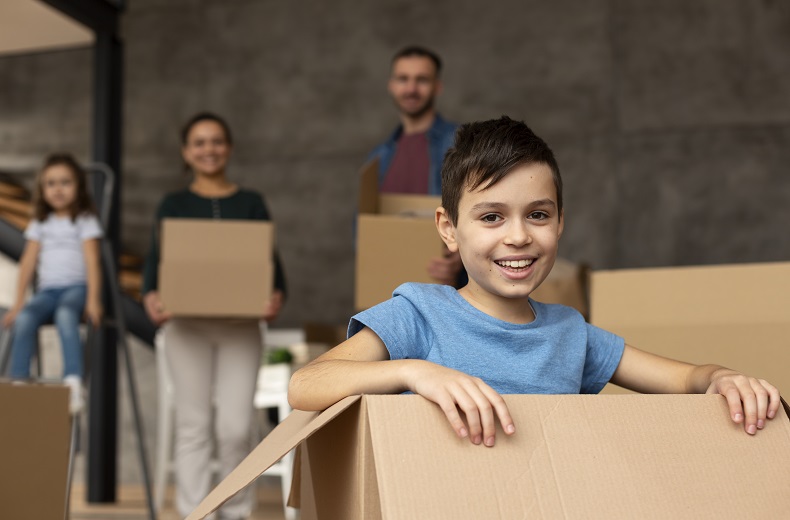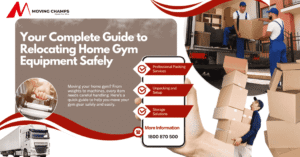How To Prepare Your Children For A House Move
Moving to a new home is an exciting but challenging experience, especially when you have children. It’s important to involve your children in the moving process and prepare them emotionally and practically for the upcoming change. In this blog, brought to you by Moving Champs Australia, a leading House Removalists company in Australia, we will provide you with valuable tips on how to prepare your children for a house move. From involving them in the planning stage to creating a smooth transition, these strategies will help make the moving process easier for the entire family.
Essential Tips for Preparing Your Children for a Smooth and Stress-Free Move
1. Communicate With Your Children
When preparing your children for a house move, open and honest communication is key. Take the time to sit down with them and have a conversation about the upcoming move. Explain to them why you’re moving, whether it’s for a new job, a bigger house, or a change in lifestyle. Help them understand the positive aspects of the move and address any concerns or fears they may have. Encourage your children to ask questions and express their emotions. Be patient and understanding, and provide age-appropriate answers. By involving them in the conversation, you can make them feel heard and included in the decision-making process.

2. Involve Children In The Moving Process
One effective way to prepare your children for a house move is by involving them in the moving process itself. Assign age-appropriate tasks to your children, such as packing their belongings, organizing their toys, or labeling boxes. This not only gives them a sense of responsibility but also empowers them and makes them feel like active participants in the house move. You can also let your children decorate their moving boxes with stickers, drawings, or their names. This personal touch will make the moving process more exciting and help them identify their belongings easily when unpacking in the new home.
3. Research The New Neighborhood
Exploring the new neighborhood together with your children can help them feel more connected and excited about the upcoming move. Visit local parks, playgrounds, and other recreational areas in the area. Check out nearby schools, libraries, and community centers. Point out fun places, such as ice cream shops or movie theaters, that your children might enjoy. Additionally, introduce your children to the concept of making new friends. Let them know that there will be other kids in the new neighborhood with whom they can play and build new friendships. This will help alleviate any anxiety they may have about leaving their current friends behind.
4. Maintain Routines
Moving can disrupt your children’s sense of stability and routine. To help them feel secure during the transition, try to maintain their regular schedules as much as possible. Stick to familiar routines for meals, bedtime, and other daily activities. This will provide a sense of normalcy and continuity amidst the changes happening around them.
5. Familiarize Your Children With The New Home
If it’s feasible, take your children to visit the new home before the actual move. Show them their future room and let them explore the space. Help them visualize where their furniture, toys, and belongings will go. This will give them a sense of ownership and excitement about their new living environment. If visiting the new home is not possible, show your children pictures or videos of the new house. Provide them with a floor plan or layout so they can start planning and imagining how they will set up their new space. This way, they can begin to develop a positive association with the new home.

6. Packing and Sorting
Involve your children in the packing process to help them feel a sense of control and ownership over their belongings. Assign them age-appropriate tasks such as sorting through their toys, clothes, and books. Encourage them to decide which items they want to keep, donate, or discard. This not only helps lighten the load but also teaches them the value of decluttering and starting fresh in their new home. Make it a fun activity by playing games while sorting through items or having a “treasure hunt” to find items that may have been misplaced. By involving them in the process, you are allowing them to actively participate and make decisions about their belongings.
7. Let Your Children Do The Labeling
Teach your children the importance of labeling boxes with their names and the contents inside. Provide them with markers, stickers, or labels, and let them take charge of labeling their own belongings. This not only helps with the organization but also empowers them and allows them to take ownership of their belongings during the moving process. By having their name on the boxes, your children will be able to easily identify their items when unpacking in the new home. This sense of familiarity will provide them with comfort and make the transition smoother.
Read Also – The Importance of Packing Fragile Items for House Removalists
8. Create a Moving Kit
Assemble a special moving kit for each child, filled with their favorite toys, books, games, and comfort items. This kit will serve as their “go-to” during the transition period and help them feel more at ease. Having familiar things readily available will provide them with a sense of security and comfort in the midst of the changes happening around them. Include items that hold sentimental value or bring them joy. This can include a stuffed animal, a favorite blanket, or a special book. Having these items close at hand will provide a sense of familiarity and help them adjust to their new surroundings more easily.
9. Say Goodbye
Saying goodbye to their current home, neighborhood, and friends is an important step in preparing your children for a house move. Organize a farewell gathering or playdate, allowing your children to say goodbye to their friends and create closure. Encourage them to exchange contact information or make plans for future visits to maintain their friendships. You can also encourage your children to create a memory book or scrapbook of their current home. Include photos, drawings, or written memories of their favorite moments in that space. This activity will help them process their emotions and create a keepsake they can cherish in their new home.

Conclusion
Moving with children requires careful planning and consideration. By maintaining open communication, involving them in the moving process, and addressing their concerns, you can help alleviate their anxieties and make the experience more positive for the whole family. Remember to maintain routines, familiarize them with the new home, and provide closure for their current living situation. Are you also planning a house move with your children? We understand the unique needs of families during a house move, and our Professional House Removalists have experience in handling relocations with children, ensuring a smooth and hassle-free moving experience. Let us help you make your house move a seamless and enjoyable experience for the whole family.
Preparing your children for a move is essential for a smooth transition. Open communication and involving them in the process can help ease their fears. Additionally, hiring professional Bed Removalists and Wardrobe Removalists can simplify the logistics of the house move, ensuring that your belongings are transported safely. With the right planning and support, you can create a positive moving experience that sets the stage for exciting new beginnings in your new home.
Phone: 1800 870 500
Email: info@movingchamps.com.au











